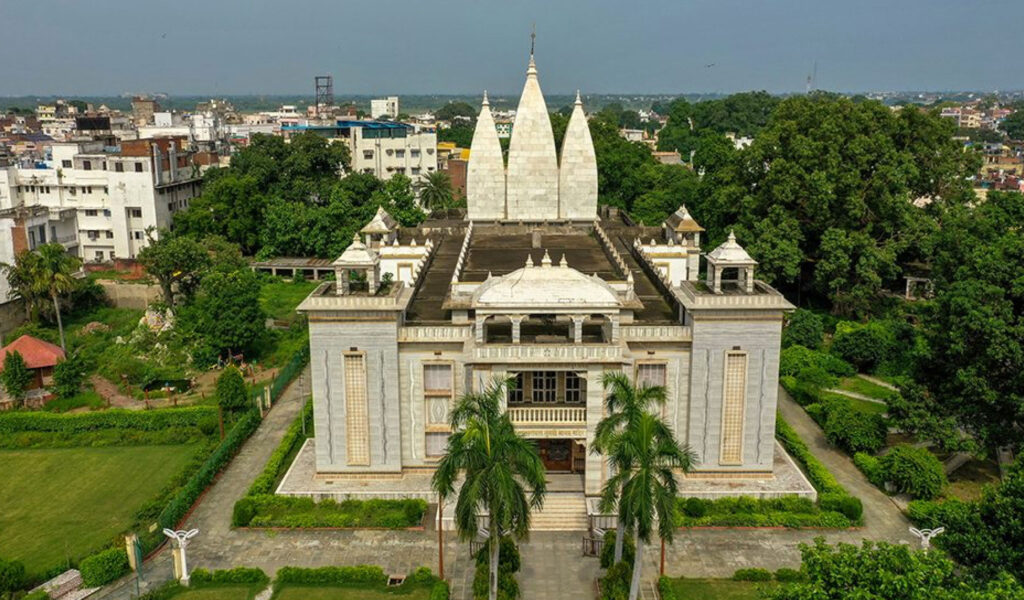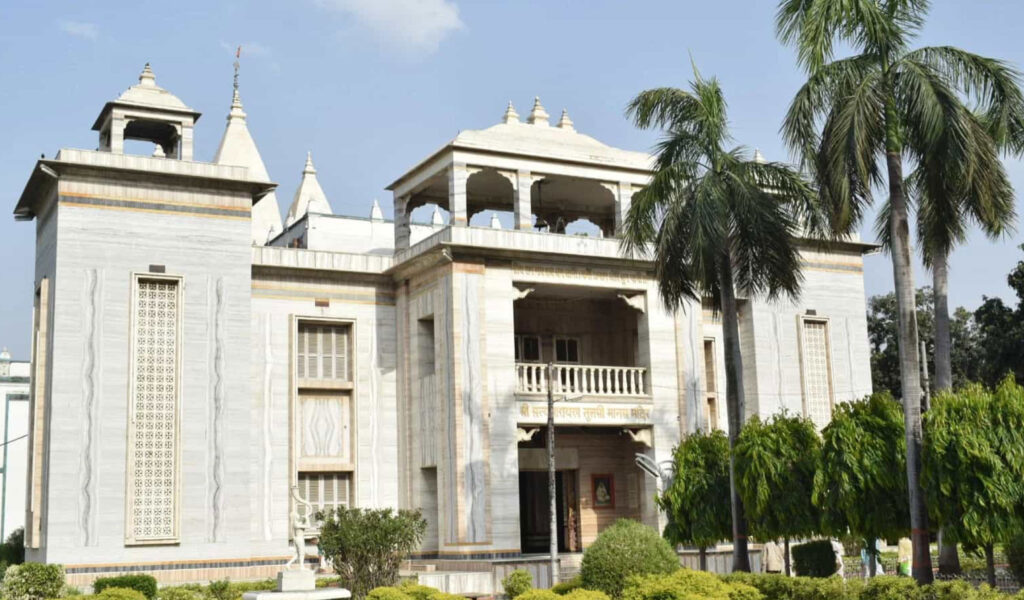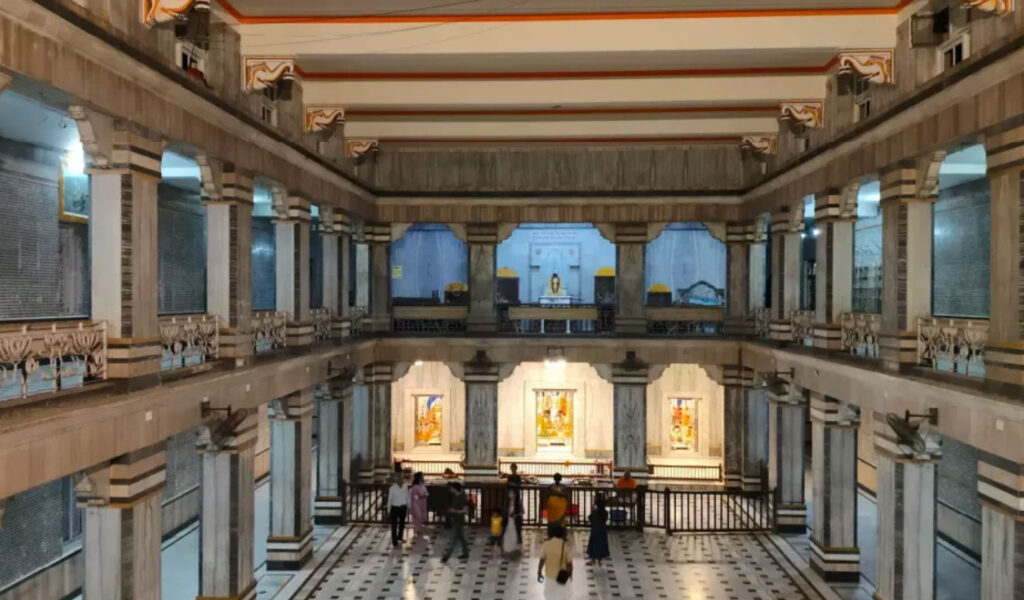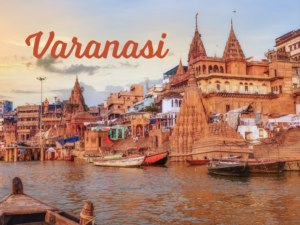Tulsi Manas Mandir – The Temple Where Ramcharitmanas Was Born

Among all famous places in Varanasi, the Tulsi Manas Mandir holds a special place — not just as a temple, but as a monument to India’s spiritual literature. This is the spot where the saint-poet Goswami Tulsidas composed the Ramcharitmanas, retelling the story of Lord Rama in simple Awadhi for the common people.
Peaceful, elegant, and steeped in devotion, the temple radiates calmness amid Kashi’s bustling lanes. For culture-seekers and pilgrims alike, it’s one of the most soul-enriching Varanasi visit places, blending history, faith, and poetry.
Where Is Tulsi Manas Mandir? (With GPS Coordinates)

📍 Coordinates: 25.2829° N, 82.9865° E
Tulsi Manas Mandir is located near Durga Kund, about 5 km south of Varanasi Junction, close to the Banaras Hindu University (BHU) campus.
The temple is part of the city’s southern spiritual belt, alongside Sankat Mochan Hanuman Temple and Durga Temple.
Easy to reach by road or included in a tour guide in Varanasi itinerary, this serene white marble shrine offers a refreshing contrast to the crowded ghats — perfect for morning or early-evening visits.
Mythological & Historical Significance

Tulsi Manas Mandir marks the very site where Goswami Tulsidas (16th century) composed the Ramcharitmanas, an Awadhi retelling of the Sanskrit Ramayana. The work made Lord Rama’s story accessible to the masses, transforming India’s devotional culture.
According to legend, the saint had divine visions of Lord Rama, Sita, and Lakshmana while writing here. The place thus became sanctified as a living embodiment of faith through literature.
The modern temple was built in 1964 by the Birla family, great patrons of Indian heritage, to honour Tulsidas and his contribution to Bhakti philosophy. For pilgrims tracing India’s sacred literary trail, this temple is one of the most meaningful places of visit in Varanasi.
Architecture

Unlike the colourful temples of Kashi, Tulsi Manas Mandir is built entirely of gleaming white marble, symbolising purity and devotion. Verses from the Ramcharitmanas are inscribed in black script across its inner and outer walls — making it a temple you can “read” as much as you can worship.
The sanctum houses marble idols of Lord Rama, Goddess Sita, Lakshmana, and Hanuman, exquisitely carved and adorned with flowers. The temple courtyard also features intricate wall-reliefs depicting scenes from the Ramayana.
The complex includes a lush garden, a pond, and a small bookshop selling Tulsidas’s works and devotional souvenirs — a lovely spot to rest and reflect. The combination of literature, art, and peace makes it one of the famous places in Varanasi for all ages.
What You’ll See & Do at Tulsi Manas Mandir

Begin your visit with darshan at the sanctum, followed by a slow walk through the marble corridors where Ramcharitmanas couplets are engraved on every wall. The inscriptions narrate Lord Rama’s journey, creating a sense of walking through scripture.
Outside, explore the Ramayan tableaux, the serene garden, and the bookstore. Every evening, devotional songs are played through speakers — a gentle, rhythmic background for visitors.
During Shravan month and Ram Navami, the temple glows with lamps and bhajans, drawing devotees from across India.
A tour guide in Varanasi can help narrate the link between this site, Tulsidas’s life, and nearby places like Hanuman Ghat and Sankat Mochan — enhancing your spiritual understanding of Kashi’s literary heritage.
How to Reach Tulsi Manas Mandir
•By Air: Nearest airport – Lal Bahadur Shastri International Airport (25 km). Taxis and autos are easily available.
•By Train: Varanasi Junction and Kashi Station connect to major Indian cities.
•By Road: The temple lies on Durga Kund Road; autos, cycle-rickshaws, and cabs are readily available.
Because of its proximity to Durga Temple and Sankat Mochan Mandir, many local guides or packages group them together for a convenient half-day heritage circuit.
Hiring a tour guide in Varanasi ensures you don’t miss the symbolic connection between the temples and the Ramcharitmanas’ storylines.
This part of southern Varanasi is filled with historical and devotional landmarks:
•Durga Kund Temple – Dedicated to Goddess Durga; bright red structure beside a sacred pond.
•Sankat Mochan Hanuman Temple – Founded by Tulsidas after a divine vision.
•Assi Ghat – Popular for sunrise yoga, Ganga Aarti, and evening walks.
•BHU Campus & Bharat Kala Bhavan Museum – For art and heritage lovers.
These form a compact, enriching route among the varanasi visit places, ideal for pilgrims and culture enthusiasts alike.
Best Time to Visit & Travel Tips
Best Time: October to March offers pleasant weather. The temple sees major celebrations during Ram Navami and Tulsi Jayanti.
Tips:
•Morning (6 AM – 9 AM) and evening (5 PM – 8 PM) are ideal times.
•Photography is allowed in open areas but restricted in sanctum.
•Remove footwear before entry.
•Dress conservatively and avoid loud talking inside.
•Combine your visit with nearby temples to save travel time — your tour guide in Varanasi can help with timing, local routes, and festival schedules.
Suggested Itinerary
Day 1: Arrive in Varanasi → Evening Ganga Aarti at Dashashwamedh Ghat.
Day 2: Visit Tulsi Manas Mandir early morning → Explore Durga Kund Temple → Walk to Sankat Mochan Temple → Lunch near BHU → Sunset at Assi Ghat.
Day 3: Visit Kashi Vishwanath Corridor, Sarnath, and local markets for Banarasi silk.
This route offers an ideal mix of literature, devotion, and living tradition — the real soul of Varanasi.
FAQ – Tulsi Manas Mandir, Varanasi
Q1. What are the opening & closing times of Tulsi Manas Mandir?
A: The temple is generally open from 5:30 AM to 12:00 PM, then again from 3:30 PM to 9:00 PM. On some sources the evening slot is listed as 3:30 PM – 9 PM.
Q2. Is there an entry fee to visit?
A: No, entry to the temple itself is free of charge. If you wish to visit the small gallery/museum inside, a nominal token may be required in some cases.
Q3. Are non-Hindus allowed to visit the temple?
A: Yes — the temple is a cultural/spiritual landmark and welcomes visitors of all backgrounds.
Q4. What is the best time of day to visit to avoid crowds and heat?
A: Early morning (just after opening) is ideal for a peaceful visit. Also, the hours before the afternoon break (12:00 PM) and after re-opening (3:30/4:00 PM) are good. October-March is generally the best season in Varanasi due to pleasant weather.
Q5. Are photography and mobile phones allowed inside the sanctum?
A: Many sources indicate photography inside the main sanctum may be restricted, and mobile phones or large bags may need to be kept aside.
Q6. Where exactly is the temple located and how far is it from major transit hubs?
A: The temple is on Sankat Mochan Road/Durga Kund Road near the Durga Kund area of Varanasi. It is about 6-7 km from Varanasi Junction station.
Q7. What special rituals or festivals happen at this temple?
A: While regular daily aartis are held (morning and late afternoon), special emphasis is placed during festivals related to Lord Rama and the life of Saint Tulsidas. Some sources mention puppet shows, exhibitions of Ramayana scenes in monsoon months.
Q8. Is the temple accessible for people with mobility issues?
A: The temple compound is well-maintained, but there may be steps or a slight incline to reach some areas. Visitors with mobility needs may plan with assistance or use the garden/ground-floor areas.
Q9. How much time should I allocate if I plan to visit?
A: A typical visit takes around 30-60 minutes, if you only visit the main temple. If you explore the gallery, read the inscriptions, relax in the garden, or combine nearby sites, allow 1-2 hours.
Q10. Is a tour guide required or helpful at this temple?
A: While you can visit independently, hiring a tour guide in Varanasi can enrich your experience — they’ll explain the inscriptions, the history of the epic Ramcharitmanas, and its connection to the site. For travellers focusing on the places of visit in Varanasi, a guide helps tie this temple with nearby heritage spots.
Conclusion
The Tulsi Manas Mandir is not just another shrine — it’s a living museum of devotion, poetry, and history. Standing within its marble walls, surrounded by engraved verses, you feel the same timeless peace that inspired Tulsidas centuries ago.
For anyone exploring the famous places in Varanasi, this temple bridges spirituality and literature beautifully. Whether you’re a pilgrim or a curious traveller, let this sacred site remind you how faith can flow through words — and how Varanasi continues to keep that divine story alive. 🌸





